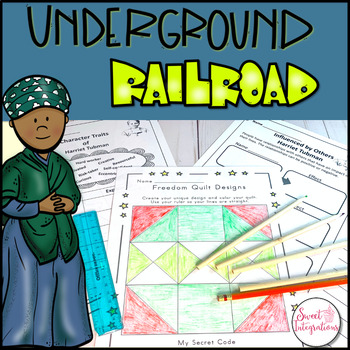As educators, we seek innovative ways to engage students across various disciplines, and the integration of technology emerges as a key strategy. Technology is a helpful tool that can make learning more interesting and fun.
In this blog post, we'll explore seven effective ways to seamlessly infuse technology across all subject areas, fostering a collaborative, interactive, and forward-thinking educational environment. From science to literature, mathematics to the arts, discover how embracing the power of technology can elevate the learning experience and prepare students for the challenges of a digitally-driven world.
I've collaborated with a group of my favorite blogger friends to share ideas and tips on how we integrate technology into the curriculum. By leveraging technology in these ways, educators can create a learning environment that is dynamic, engaging, and conducive to deeper understanding and retention of information.
9 WAYS BOOM CARDS CAN SUPPORT YOUR AMAZING READERS
Carla from Comprehension ConnectionInfusing technology into reading not only enhances the learning process but also opens up new avenues for engagement, comprehension, and interactive exploration of literary concepts. Have you tried using Boom Cards? Carla from Comprehension Connection has created quite a few varieties of Boom Cards, and in her post, 9 Ways Boom Cards Can Support Your Amazing Readers, she provides a variety of examples. The beauty of Boom Cards is that they can be projected and used with a full group of students, used as a center for extra practice, assigned for students to use at home, and so much more.
Aside from Boom Cards, Carla also loves using technology for skill modeling with book companions, with websites like Reading A to Z as she explains in her post, and through various apps too. You may find this list helpful. It includes some of the best literacy apps and websites.
THE POWER OF GAMES IN YOUR CLASSROOM
Susan from Keep 'em Thinking
Games in the classroom allow students to play freely without judgment. Interactive games can and will positively influence academics, and above all, they are loads of fun! Susan from Keep 'em Thinking loves to use Jeopardy Style PowerPoint Game Shows for pre-assessment, morning warm-ups, and as a review in all subjects.
In her blog post The Power of Games In Your Classroom, Susan shares how to use these games in both traditional classroom settings and distance learning. They make learning more engaging for students, foster collaboration and social skills among students, and enhance problem-solving and critical thinking.
FREE VIRTUAL FIELD TRIPS FOR ELEMENTARY STUDENTS
Janet from Fishyrobb
NOVEL WAYS TO INCREASE ENGAGEMENT IN ART CLASS
Amanda from Party in the Art Room
Incorporating technology into art projects opens a world of creative possibilities, allowing students to seamlessly blend traditional artistic techniques with digital tools, fostering innovation and expanding artistic expression. Amanda over at Party in the Art Room swears by using novely to engage students. She has developed a tech-rich, graphic art project called Food Faces that uses the work of Arcimboldo as inspiration for creating portraits using food items in the imagery. It's so much fun, plus there are a ton of curricular connections for arts integration with science, math, and ELA!
INTEGRATING TECHNOLOGY IN THE CLASSROOM WITH DIGITAL RESEARCH PROJECTS
Kady from Teacher Trap
The power of technology enhances research projects, providing students with dynamic tools to explore, analyze, and present information in innovative ways. Kady from Teacher Trap was amazed to see how her students dove into Digital Research Projects! These online projects are easy to integrate into any subject and allow students to use their creativity as they research animals, famous figures, or even planets. Plus, they learn essential research skills and new vocabulary as they create their own digital presentation.
HOW TO FLIP YOUR CLASSROOM WITH 4 EASY TWEAKS
Amy of Amazing Materials for You
Flipping the classroom is an innovative educational approach that reverses the traditional learning model, encouraging students to engage with instructional content at home through pre-recorded lectures or materials, allowing valuable class time to be dedicated to collaborative discussions, hands-on activities, and personalized guidance from teachers.
Amy of Amazing Materials for You knows how to maximize individualized and differentiated instruction in her upper elementary classroom. In her blog post, How to Flip Your Classroom with 4 Easy Tweaks she recommends flipping your math class so you have more time in class for small group instruction and independent learning. She includes specific websites to use for mini-lessons, as well. Join her for the fun!
Because I have worked with students and teachers, I have always wanted to help teachers simplify ways to integrate technology. I would emphasize the importance of finding technology tools that work well for them and their students. One of my favorites is PicCollage. It's easy to use and the app can be infused in various ways across content areas. I've used PicCollage for book reviews, writing activities, holiday projects, project based learning, and more.
I'm a fan of using digital templates and saving them on my Google Drive. Speaking of Google, have you tried Flippity? You can easily turn a Google Spreadsheet into games, review activities, and productivity tools for teachers. Teachers and students love escape rooms, but some are reluctant to create them. Try this simple way to create an escape room with Flippity Scavenger Hunt. Students can create their own Flippity Scavenger Hunt.
OTHER TECHNOLOGY TIPS AND IDEAS FOR YOUR CLASSROOM
- Top Virtual Math Manipulatives for the Elementary Classroom
- Using Digital Comics in the Classroom
- Preparing for Digital Escape Room










.png)


















No comments